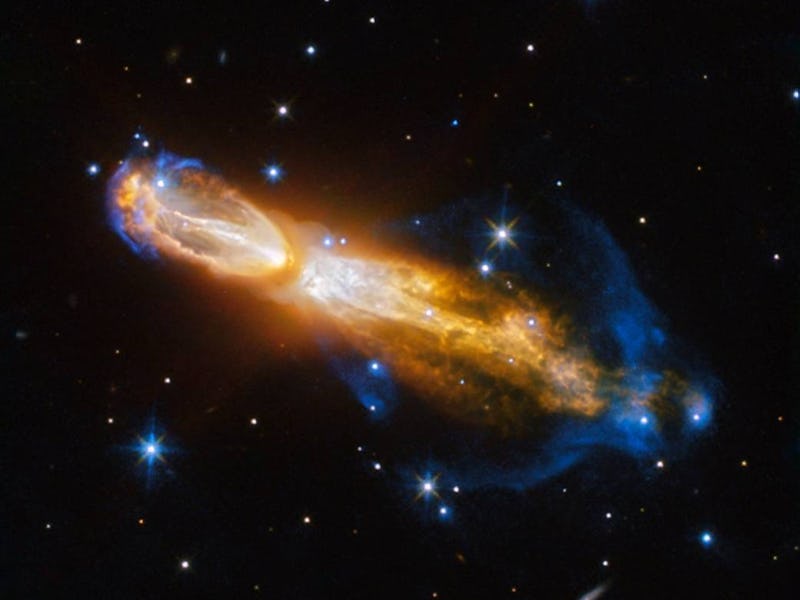
This stinky star just passed some serious gas throughout the universe in an exploding death scientists have never seen before. NASA’s Hubble Space Telescope caught a wonderful, rare glimpse of the Rotten Egg Nebula in the midst of an explosion. It’s the type of scene that happens in a fraction of a second relative to stellar timelines.
The Rotten Egg Nebula, formally known as the Calabash Nebula, contains a massive amount of sulfur which, when combined with other elements like hydrogen, causes a very putrid odor like rotten eggs. It’s safe to say if there are any intelligent organic lifeforms hanging around the vicinity, they are accusing one another of having let a big one rip.
The snap that Hubble took basically shows a red giant — the late stage of stellar evolution where a main sequence star (such as our sun) has cooled off and blown up to several times its middle-aged size — dying an explosive death and becoming a nebula. Gas and dust are spewed out at speeds of over 600,000 miles per hour.
In about a thousand years, the Rotten Egg will settle down into a more stable planetary nebula and will emit a constant flow of gas until it cools to the point that the center of aggregate carbon and oxygen becomes a white dwarf. So, catching an event like this was practically a once-in-a-lifetime opportunity for humans.
The Rotten Egg Nebula explodes in a never before seen rage.
From the data, a team of Spanish and U.S. astronomers were able to infer the first initial moments of a star’s death. They believe the cause of the stretched out shape comes from shocks from the high-speed gas as it is being emitted from the star. Previous data sets showed that the star might burst, but scientists were unable to confirm the event.
Scientists hope to move forward with this rare data to help design a system to predict when this kind of event will occur to other red giants in the distant universe.